In a city that suffers a relentless monsoon with lightless damp days followed by a fleeting winter which is now marked by grey smog, spring is precious. And spring too is fleeting.
Avenue trees all across the city begin to jewel themselves in a new flush of leaves; coppers, maroons and fluorescent greens. And soon after, the flowers follow; yellows, reds and purples. With bees buzzing on the crowns of flowering trees and birdsong cutting through the ever present traffic soundscape of the city. Spring in Mumbai is an act of resistance. Overworked, under-rested and always in a hurry, the average Mumbaikar only ever pauses for traffic or water logging or though rarely, for flowers in Spring! Spring is thus a necessary means of self preservation for the city.
Onset of spring after Covid-19
During the Covid years, human activity in the city had lowered making way for the natural world in the city to recuperate and even thrive. There was more birdsong and more foliage. But most importantly, there was a timely spring. This meant that flowering trees in the city were now blooming at the time they are meant to.
But once we were back to pre-pandemic life, this rhythm was lost yet again. In November last year, I began to notice Mango flowers and I knew Spring was askew. We have come back to the worst possible state of the city with poor air quality, multitudes of dug up roads and a sea of concrete stilts. We must be patient, we are told. Bridges will come and the metro and more flyovers too! We will be flying across this sliver of an island we are told. Well, until then, Spring will come. This we know.
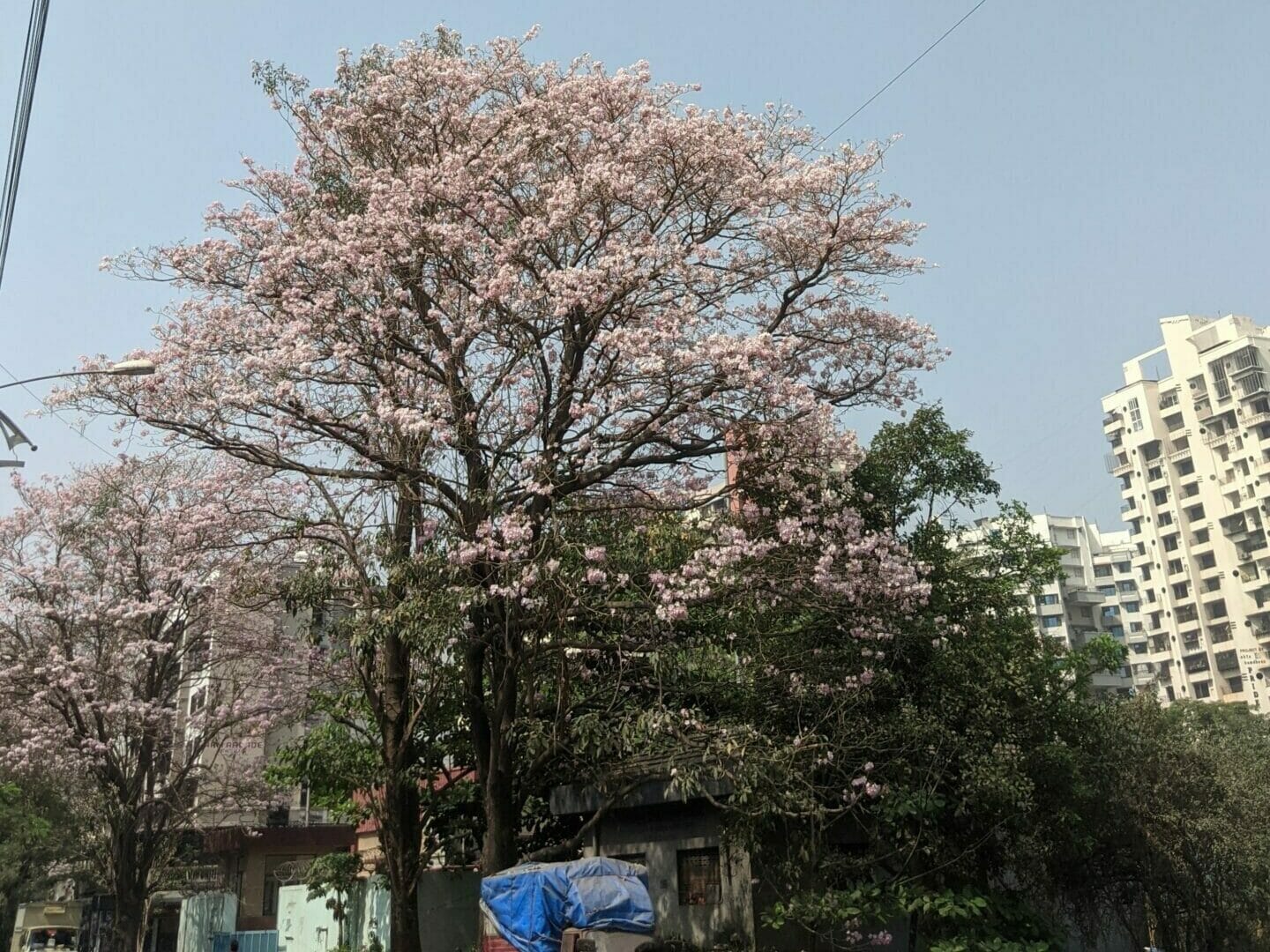
Spring in the city usually begins with the arrival of the Tabebuia Rosea or Rosy Trumpets in late January and early February. These paper pink flowers have now come to be known as Mumbai’s own cherry blossom. Though there is no such kinship between the trees, it’s the fact that the entire tree gets covered in hues of pink akin the cherry blossom. Vikhroli is now known for its patch of highway pink!
Magical blooms of March
Next to follow after the pink Rosy Trumpets are the White Silk Cottons that finish blooming in early spring. Their flowers are easy to miss but not their seeds! You’ll notice clumps of cotton like sheddings all around these trees, clinging to walls and gathering in the bend of streets.

By Holi it’s officially Spring and the Copper Pods arrive and begin to paint parked cars their bright yellow flowers.

The Cannon Balls follow and their fragile pink flowers fall to the earth to create pools of pink petals. This street litter we welcome. In fact, the otherwise unstoppable Mumbaikars may even slow down in their path to forage for a flower and pick it up to their nose to get a whiff of that sweet fragrance. Cannon balls are greatly revered among Buddhists and Hindus, so this pause to smell a flower may even be a prayer.
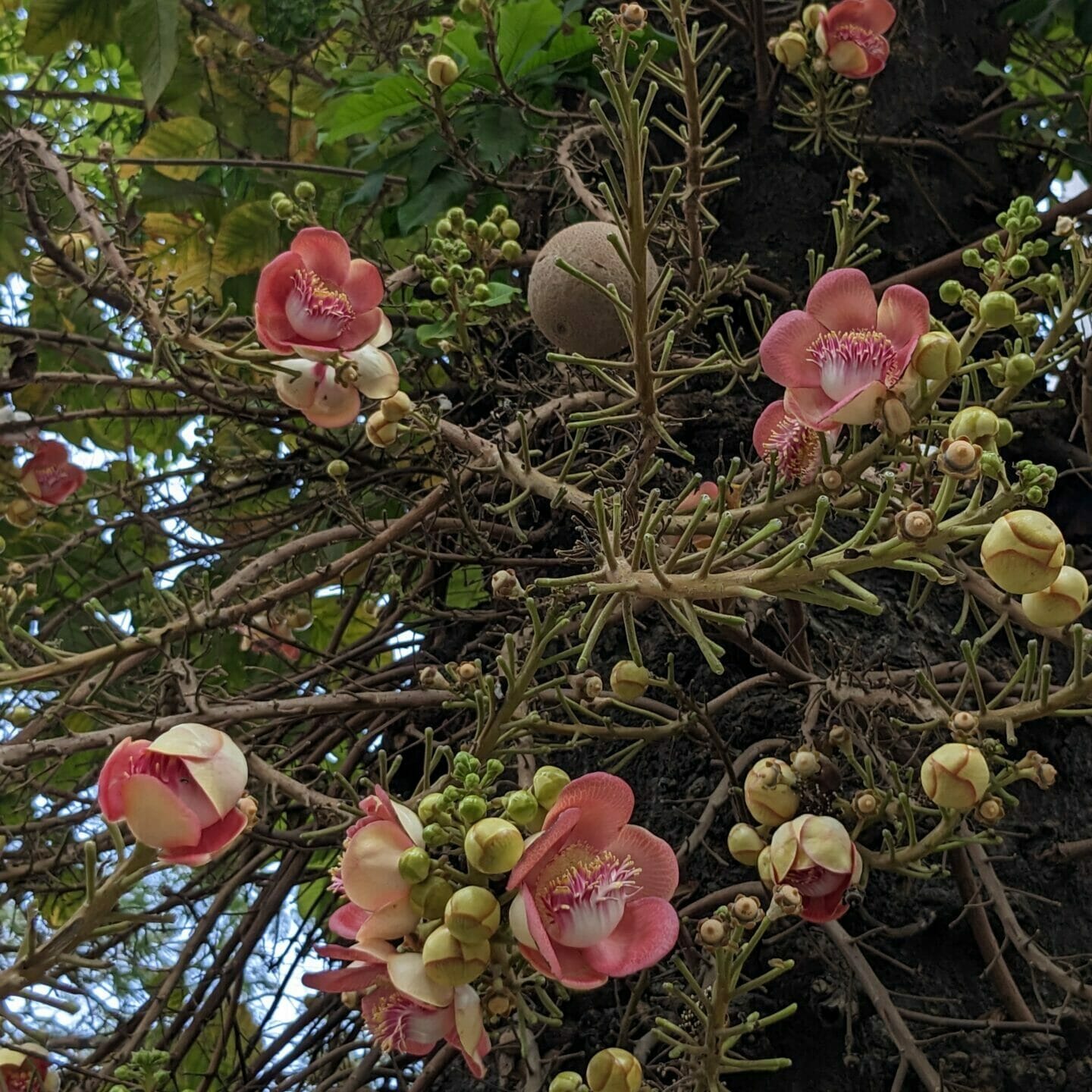
By mid March we are swinging in Spring with African tulips, Red Silk cotton and the Sita Ashoka who join the floral parade. The Pangome Oiltree, very common in the city, begins to bloom too but its flowers are usually missed by the eye until one notices the carpets of tiny lavender and white flowers it creates that look like bhel.
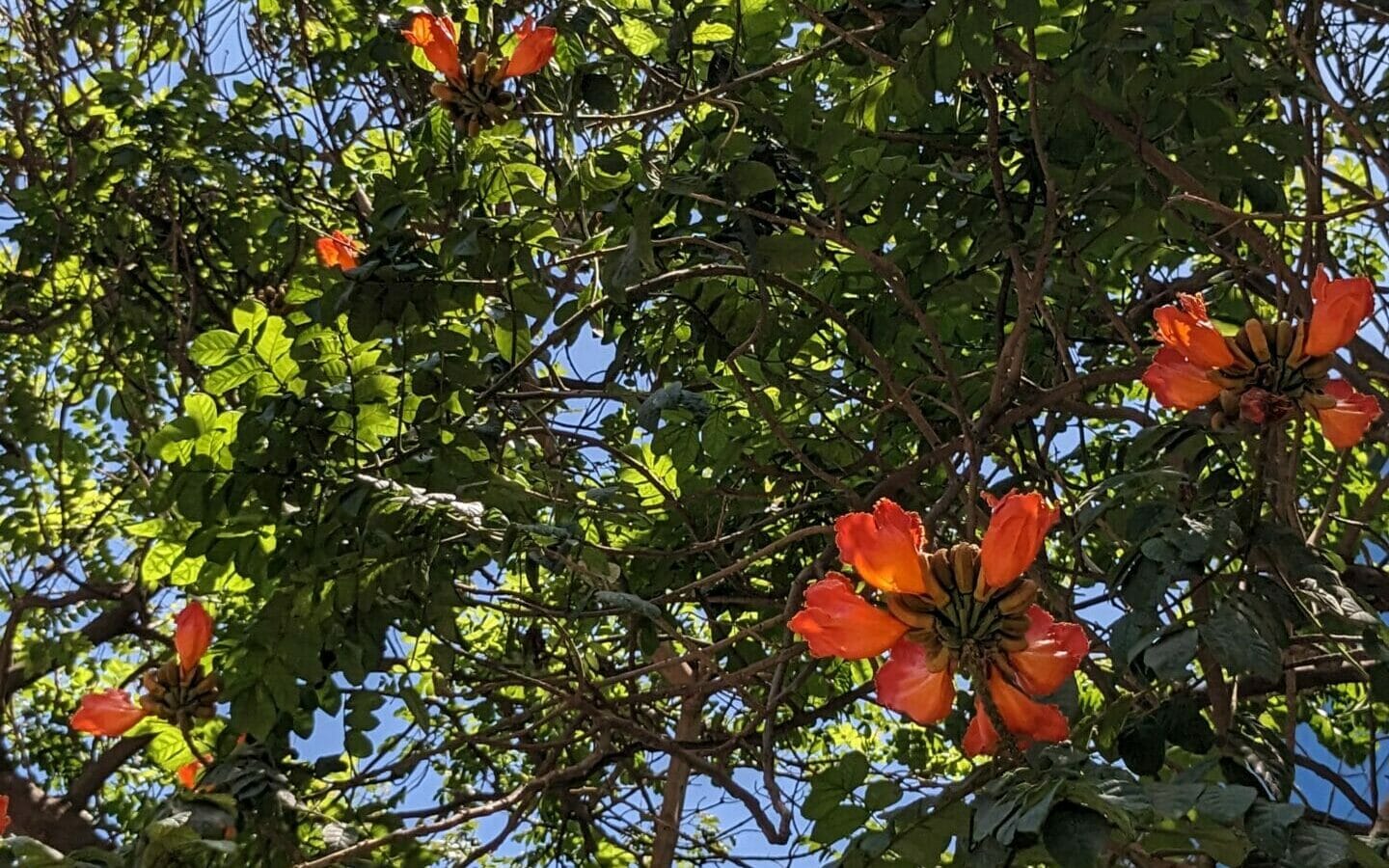
Late March is when the Maharashtra state flower – the brilliant Jarul or Pride of India – begins to bloom. The flowers in pinks and purples almost trumpet out of the tree’s crown. This is a city avenue tree favourite and you’ll spot it easily. Simultaneously in March, the mammoth canopies of rain trees begin to be speckled in light pink flowers.
Another special tree to look for is Bombax Ceiba, common name Red Silk Cotton. A solitary tree can be found on Hill Road in Bandra standing guard of the St. Stanislaus High School , blooming in crimson waxy flowers in the month of March.

Saraca Asoca, commonly known as the Ashoka tree, is very commonly spotted in the city. There is in fact a cluster of these trees in BKC that make for a modern day Ashok Vatika. Then there is Millettia pinnata, common name Pongame Oiltree, is found creating carpets of tiny flowers.
Read More: A fight to save a heritage tree in Mumbai
But the showstopper of Spring for me is the Indian Laburnum or Amaltas. My favourite one grows at the corner near Jalsa – Amitabh Bachchan’s bungalow in Juhu. In the week of Vishu, when the flowers also have particular significance, this yellow brightly blooming tree is the real star on this street.
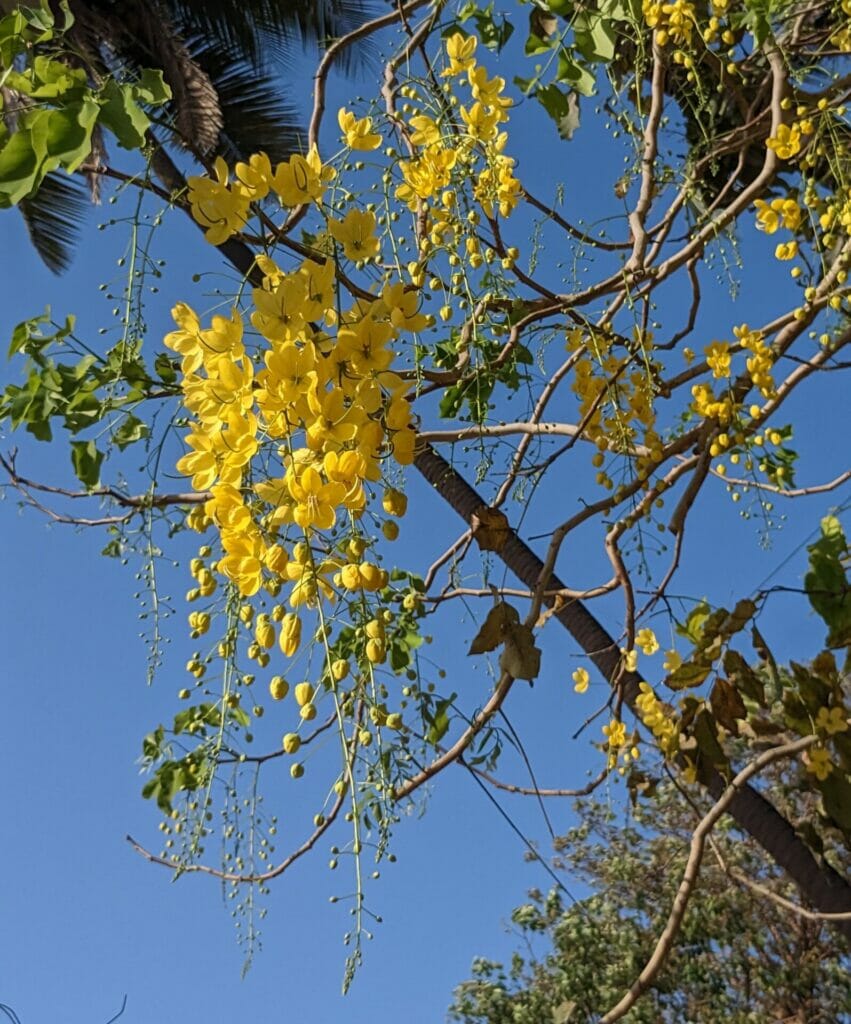
April’s mid-spring blossoms
As we step into April, the days begin to get warmer but it’s still bearable as the skies are bright blue, there is spring breeze and the bird song continues. If you really look you’ll spot Purple Rumped Sunbirds on flowered crowns of trees, and Coppersmith Barbets camouflaged on fig Trees, Golden Orioles that usually inhabits high tree canopy singing its distinctive fluting whistle like song on a lower branch… And of course, the frantic call of the Indian Koel that is synonymous to Spring.
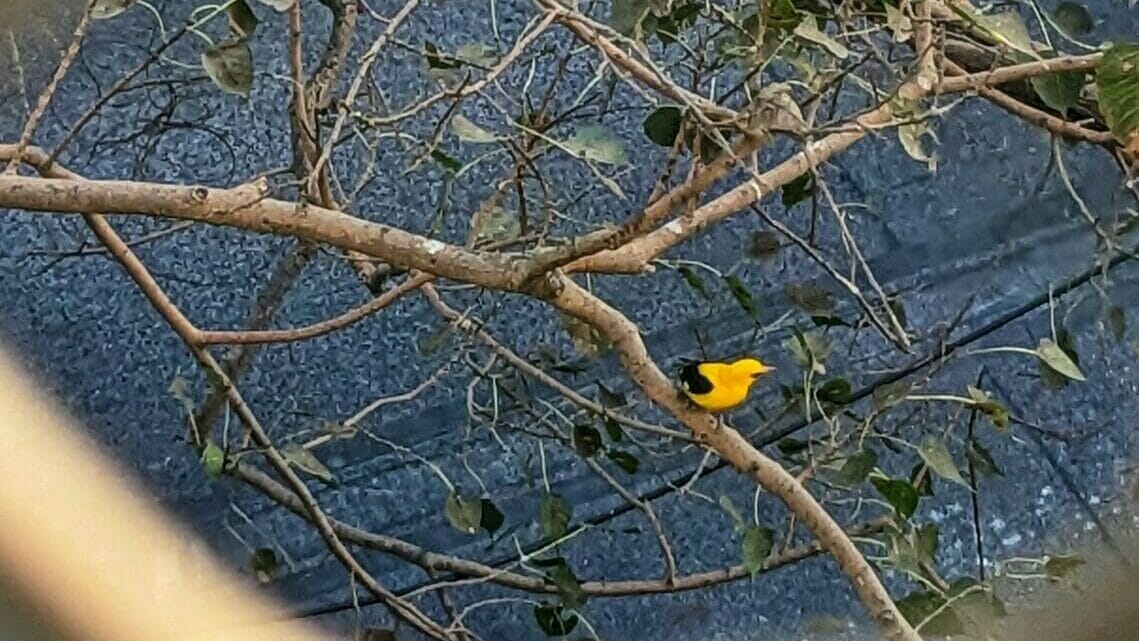
Through April the city is abloom, flowers trickle into people’s lives on avenues, in parks or simply through their IG feeds. And as April makes way for May, even the busiest of Mumbaikars cannot miss the arrival of the Gulmohars. As summer rises the Gulmohars mimic the heat in their vermillion flowers laden in cascading branches. This is the final scene of our Spring ballad. Most flowers on trees fade by the end of May, only the Gulmohars keep us company until the rain clouds arrive. The trees look even more majestic with their vermillion blooms popping against the Grey monsoon skies.

Gulmohars typically bloom on bare branches with some leaves, but you may notice fresh flush of leaves on the tree by the time the flowers arrive. This is not ideal, this is a sign of an overworked tree. And this tends to happen when the signals are cross wires due to climate change. But then, if you’re a city tree and a Mumbai city tree, overworked is a state you’ve learned to live with.
Tree walks that educate and bring joy
My tree walk Mumbai Overstory is an introduction to commonly seen trees in the city, interspersed with excerpts from literature. My hope is the experience of tree gazing in familiar neighbourhoods and foraging flowers on footpaths will encourage walkers to observe the trees in their lives more thoughtfully and perhaps even allow them to find new roots in the city.
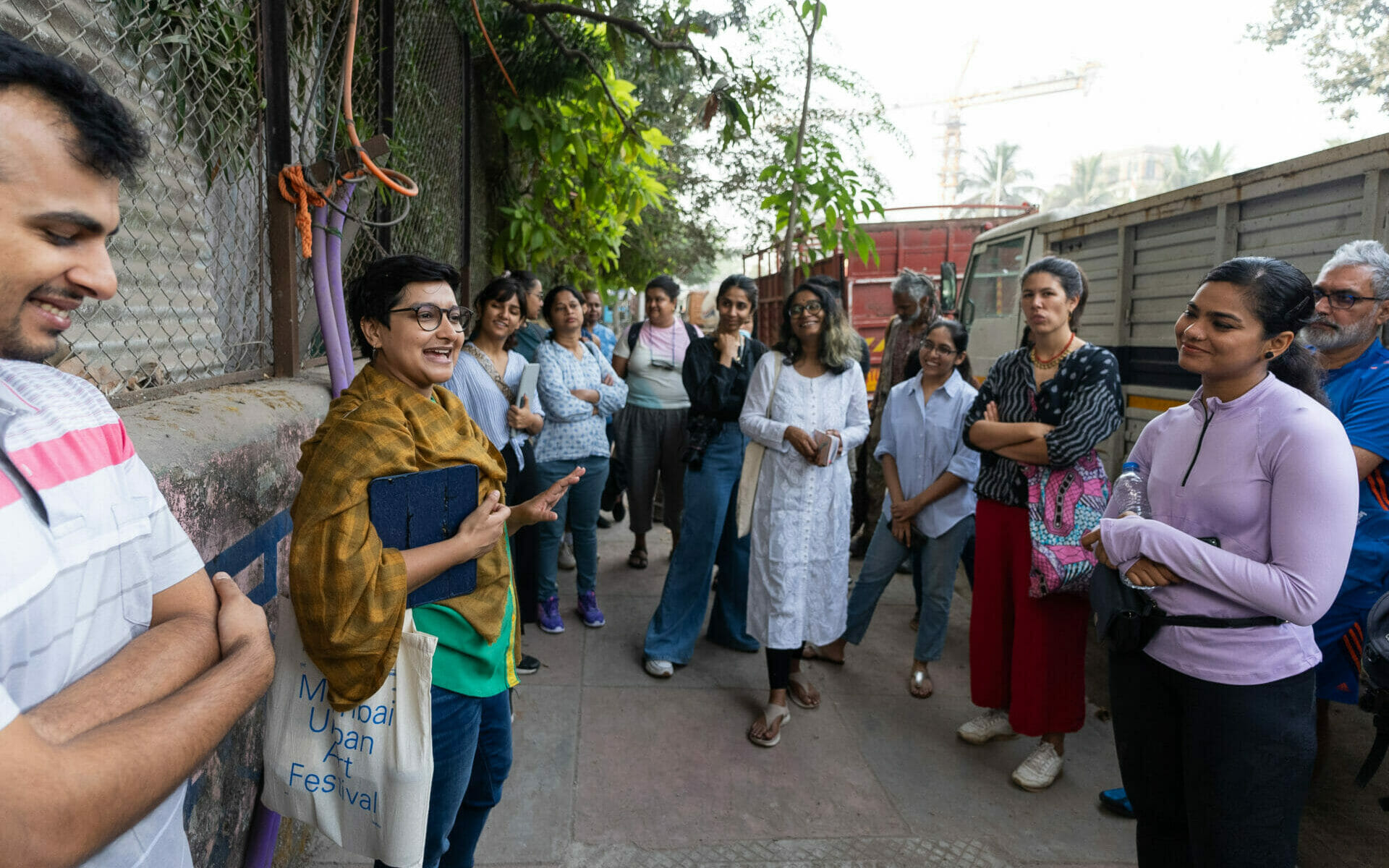
This year has been particularly difficult for us all in the city, trees and humans alike, with months of terribly polluted air. While most Mumbaikars nursed a gnarly cough through the winter months into Spring, the trees stood covered in grey dust right. Until Spring came and some respite with new leaves, flowers and some rain (also untimely).
In the financial capital by the sea, everything is tidal. Fame, fortune and fallen flowers. Spring is the time when the books close at the end of the financial year and spring is the time when roads are dug up for repairs. The respite of flowers is essential to break away from the numbers and the neurosis of navigating traffic.
As someone who calls this city home, spring has become an oasis to hold onto, no matter how short lived. It’s the only time of the year that a fallen flower can stop us on our path, or make us take a longer route to see a flowering tree or simply stop to look.